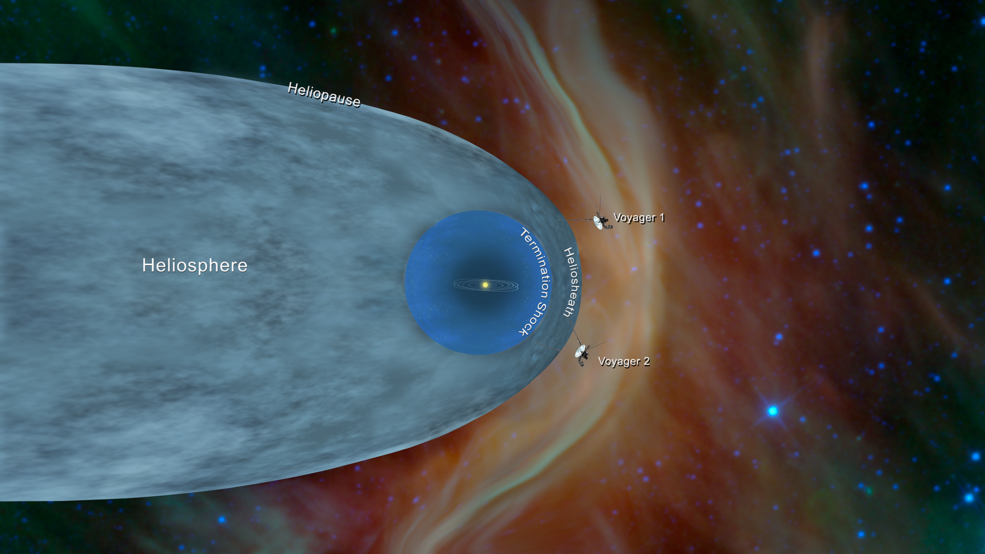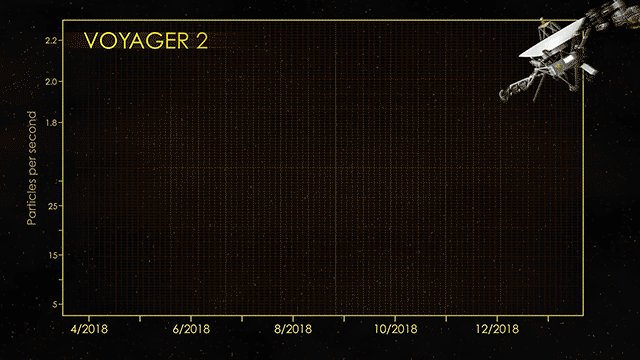The gas cyanogen has been detected in 2I/Borisov’s coma—a historic detection of a gas commonly found in regular comets.

It’s official, the solar system is playing host to its second confirmed interstellar visitor only two years after the strangely-shaped `Oumuamua was spotted receding into interstellar expanse. While `Oumuamua was historic in that it was the first confirmed interstellar comet to be discovered, according to a new study (which has yet to be peer reviewed), this newest interstellar vagabond is potentially more significant:
“For the first time we are able to accurately measure what an interstellar visitor is made of, and compare it with our own solar system,” said Alan Fitzsimmons of the Astrophysics Research Center, Queen’s University Belfast, in a statement.
So, why are astronomers so excited about 2I/Borisov?
A (Cometary) Star Is Born
In late August, the comet was discovered by Gennady Borisov, an amateur astronomer in Crimea, and initially designated “C/2019 Q4” because, well, it looked like a regular comet. It was only after repeated observations by Borisov, and confirmed by other amateur and professional astronomers, that the object’s path and speed through the solar system could be realized. It turned out to be traveling fast.
Like, really, really fast.
Clocked at a breakneck pace of 93,000 miles per hour (150,000 kilometers per hour), astronomers realized that C/2019 Q4 was a special kind of comet. While it was found to possess the characteristics of a regular comet (it has a faint coma and tail) there is no way that it’s gravitationally bound to our Sun. Its trajectory is hyperbolic. In other words, it didn’t originate in our solar system—it’s an alien visitor.
This simple animation depicts the comets path through our neighborhood; there’s little ambiguity in the fact that it doesn’t intend to hang around for very long:

Last week, these factors all culminated in the International Astronomical Union (IAU) officially classifying C/2019 Q4 as the second unambiguous interstellar comet discovery to date. It was therefore reclassified as “2I/Borisov” (1I/`Oumuamua being the first, of course). It’s thought interstellar junk passes through our solar system all the time, but only two comets (to date) have been confirmed to have an interstellar origin, suggesting our observational techniques are improving.
Now, the really neat thing about 2I/Borisov is that it’s a lot more active than `Oumuamua; the latter produced very little in the way of a discernible coma or tail after its discovery. Borisov, however, is being far more generous, already allowing astronomers to grab a crude spectroscopic snapshot of the gases being vented into space.
A Mysterious Interstellar Time Capsule
After being thwarted by the glare of the Sun on Sept. 13, an international team of astronomers was able to use the William Herschel Telescope on La Palma in the Canary Islands in the morning of Sept. 20 to measure the light that was being scattered off the gases in its tenuous coma. Follow-up spectral analysis by the TRAPPIST-North telescope in Morocco was also used.
Measuring the spectrum of Borisov allows us to understand the chemical composition of the ices that are fizzing into space as they are slightly heated by our Sun’s radiation via a process known as sublimation. And this is profoundly awesome.
To capture the spectra of any comet reveals the chemicals it contained when it formed billions of years ago. In our solar system, comets are considered to be icy time capsules; they formed from the solar nebula when the Sun was a proto-star and the planets were just starting to accrete from the surrounding protoplanetary disk of ancient debris. To see the chemicals contained within the vapor of these fizzing “dirty snowballs” gives us a five-billion-year-old glimpse of what the solar nebula and its system of baby planets would have contained.

Borisov wasn’t formed in our solar nebula, however, it was formed from the nebula of a distant, unknown star of unknown age. We have little idea as to where or when it originated (though there’s little doubt that astronomers will use data from the European Gaia space telescope to try to figure out a rough estimate, as they did with `Oumuamua).
Surprisingly Familiar
While previous observations of the comet’s nucleus have revealed a reddish tinge that is similar to the long-period comets that originate from our solar system’s Oort Cloud (such as Hale-Bopp and Hyakutake), the new study has been able to identify another familiar trait: its venting gases contain cyanogen. This chemical is a simple, yet toxic molecule containing one carbon atom and a nitrogen atom (CN). Cyanogen is commonly found in regular comets born in the solar system.
The researchers were also able to make an estimate of the ratio of the dust to gas that is being blasted from the comet’s nucleus and, you guessed it, it is roughly in agreement to what you’d expect a regular comet to generate.
All of these findings point to an unexpected conclusion, as the researchers highlight in their paper: “If it were not for its interstellar nature, our current data shows that 2I/Borisov would appear as a rather unremarkable comet in terms of activity and coma composition.” In other words, if it wasn’t for its extreme speed, 2I/Borisev would look like a regular comet from our solar system.
Does this mean all comets from any star system have similar compositions? That doesn’t seem possible, considering we know other stars and their associated nebulae their comets would have formed from contain different chemicals to our own. It could just mean that Comet Borisov was ejected from a nearby star that formed in the same stellar nursery as our Sun five billion years ago and should therefore contain approximately the same chemicals. But for now, it’s too early to say.
Obviously, more work needs to be done and, fortunately, we have time. The comet will reach perihelion (point of closest approach to the Sun) in early December, and astronomers are predicting maximum nucleus activity in December and January before it starts to recede into the interstellar night.
So, watch this space.
















